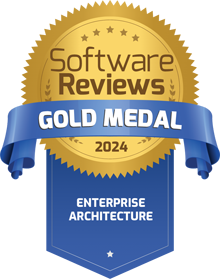Integration architecture
Why is Managing Integration Architecture essential?
In the dynamic landscape of modern business and exponential IT growth, the role of Information Technology (IT) systems in supporting organizational functions is essential. These systems serve as the backbone of business operations, ensuring seamless functionality across various facets and the integrations of the Application Portfolio stand out as a crucial element. As businesses evolve, so do the integrations that bind these applications together, making the landscape ever-changing. It is in this dynamic environment that the importance of effective Integration Architecture becomes necessary. Thoughtful integration planning and a focus on integration quality are pivotal in maintaining the efficiency and stability of the Application Portfolio. SAMU is designed to navigate and optimize these complexities and can be an effective tool to manage these. By providing insights, facilitating planning, and ensuring the quality of integrations, SAMU will become instrumental in enhancing the overall effectiveness of IT systems and contributing to the seamless operation of the business.
Understanding Integration Architecture and Gaining an Advantage
Achieving a comprehensive and effective Integration Architecture requires an understanding and meticulous modeling of various integration technologies. This encompasses diverse approaches such as peer-to-peer connections, integration platforms, synchronous, asynchronous methodologies, etc. Each integration technique carries its own set of advantages and disadvantages, requiring a nuanced understanding for optimal deployment. Whether it involves re-using specific functionalities or leveraging shared data, the strategic decision-making process involves weighing these factors. Moreover, the integration landscape presents opportunities for impact risk mitigation through the thoughtful implementation of interfaces or service contracts. By identifying the advantages of each integration method and strategically employing them based on specific needs, organizations can cultivate a robust and adaptive Integration Architecture that will lead to increased efficiency and will mitigate risks.
Integration Architecture Governance
Integration architecture, or in other words adopting an “API first” approach, should include service-oriented methodologies like microservices and creating a Service Catalog. This approach is strengthened by strict service governance, achieved through the integration of the Service Catalog into automated Continuous Integration and Continuous Deployment (CICD) processes. This streamlined approach ensures standardized APIs, flexibility, and consistency, fostering an Integration Architecture that is agile, scalable, and maintains high-quality standards throughout the integration lifecycle.
Visibility and Dependency Mapping:
SAMU offers a centralized data-driven live repository for modeling the organization’s architecture. This includes details about business services, applications, databases, and their interconnections.
With SAMU you can map the integrations on multiple levels and granularity between different components of the enterprise architecture. Sometimes we need of oversee only the end-to-end integrations, where details (integration hubs or other intermediate components) are hidden, however, sometimes it is really important to understand them in highly detailed granularity. SAMU’s flexible meta-model and visualization allows for easy representation either in detail or in a high-level.
Standardized Integration Patterns and Impact Analysis:
SAMU can offer predefined templates or technology standards for common integration scenarios. This can guide integration architects in selecting appropriate integration setups and technologies, ensuring consistency across the organization. SAMU can assist in conducting impact analysis when changes are proposed in the integration architecture. This will help architects assess how modifications to one part of the architecture may affect other interconnected components.
Join our satisfied customers!
Digitally conscious businesses who trust us










Why us?
We offer a Free SAMU Trial and/or a Free Proof of Concept (We set up the trial using customer data)
SAMU is extremely flexible, the meta-model is fully flexible, custom reports can be created, sophisticated user permission rights
Our Best Practice Model based on 20+ years of experience in delivering successful EA projects
SAMU has been developed using a bottom-up approach. Product development is based on real-life customer needs.
Customer satisfaction and our approach. Each customer is unique. We strive to bring real value and to have a successful EA practice.
Powerful visualizations: Our visualizations are all data-driven generated from the live repository with multiple lifecycle views available.
Integration capabilities: Sophisticated API to automate data upload and maintain quality in the repository.
Don't take our word for it!

Atoll Technologies Ltd. EA tool SAMU is a leader in Info-Tech Research Group /SoftwareReview 2024 Enterprise Architecture Data Quadrant Report.
![]()

„Atoll Technologies Ltd.is the dominant vendor for EA tools in the Middle East. It also has regional strength in Central and Eastern Europe, and can provide strong support to these otherwise underserved markets."
![]()

Atoll Technologies Ltd. EA tool SAMU is included in the Forrester Now Tech: Enterprise Architecture Management Suites, Q2 2022.
![]()

